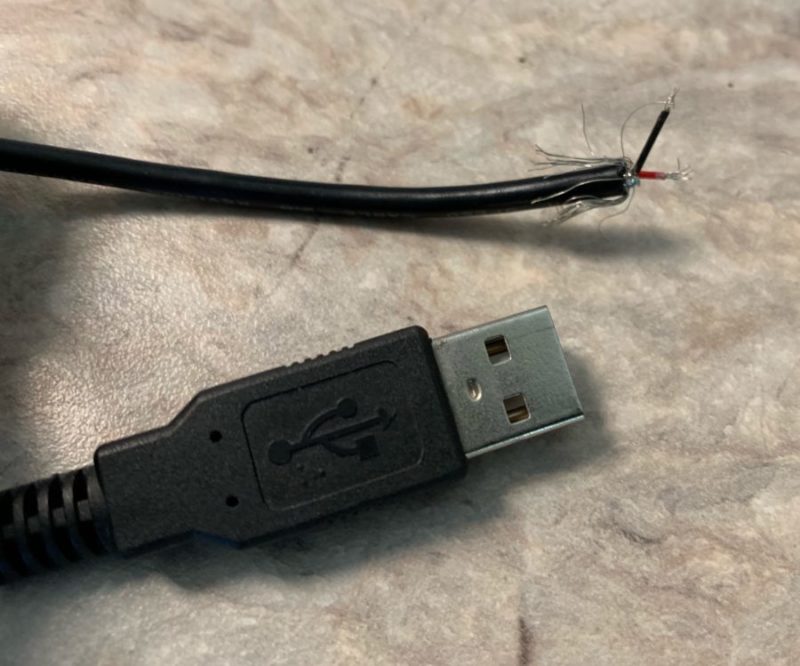More and more teenagers across the nation are beginning to experiment with tobacco and marijuana products through the use of vape pens and devices like JUUL, which are becoming less difficult to conceal from parents and easier to access. It’s becoming more and more a problem in the Santa Clarita Valley, too.

Last month, after school officials encountered a number of cords with exposed wires and cut ends, Valencia High officials warned parents of a new “vaping” technique that allows teenagers to inhale flavored nicotine with the help of charger cables more mobile devices that have a USB port.
A recent study by the Centers for Disease Control estimates vaping use among high school students has been on the rise since 2011.
Last year, the estimated number of high school vapers increased an estimated by 1.5 million over the year before. But the problem is now stating even younger — thanks to the use of vape pens and similar products, nearly one out of every 20 middle school students in 2018 reported they used e-cigarettes in the past 30 days, according to a CDC study.
“I believe there’s an epidemic of youth use,” Food and Drug Administration Commissioner Scott Gottlieb said in a statement discussing the agency’s efforts to combat the growing problem. “E-cigs have become an almost ubiquitous ‒ and dangerous ‒ trend among teens.”
Castaic Middle School Principal Bob Brauneisen previously agreed with this sentiment while speaking at a Castaic Union School District school board meeting.
“All middle schools see it — not just us,” Brauneisen said, adding, “the biggest problem we have here in middle school is kids are hugely impressionable, and they will do things that make them seem cool or older.”
The principal recalled a time long ago when the cool kids were considered smokers and students would hang around in bathrooms.
“Today, vapes have basically replaced smoking,” Brauneisen said. “They used to be this big device that fit in your hand, and they still make those, but, usually, they’re easy to conceal because they’re the size of a thumb drive.”
Parents might have also noted that the smoke can smell more like candy, and Brauneisen said students can conceal the huge clouds by blowing into their shirt or backpack, which absorbs the cloud.
“It’s finding it — that’s the hard part,” Brauneisen said, mentioning he probably gets about five or six suspensions a year as a result of vapes found on campus. “It’s a huge problem though, because it’s a game of cat and mouse. I’d say if you were to check kids with random searches, then you’d probably find five or six a day, but that’s not reasonable. I do think the percentages would be a lot higher than people think.”
Brauneisen added in an interview with The Signal that administrators are doing everything in their power to prevent vaping on campus, “but anyone who tells you it’s not a problem in school is not telling you the truth or isn’t aware of what’s going on with their students.”
When curious teens experiment with tobacco, they’re most likely to start with vape pens and other e-cigarettes, which dramatically increases kids’ odds of moving on to traditional cigarettes, according to Henry Mayo Newhall Hospital officials.
As a result of statistics like these and similar health trends, there has been
an increased crackdown on shops who sell tobacco products to teenagers, both
locally and beyond.
In December, Sgt. Tim Vander Leek said sheriff’s deputies set up a first-of-its-kind enforcement operation targeting vape shops in the SCV, and 60 percent of the shops visited had employees cited for allegedly selling vaping products to minors illegally.
However, it’s not just tobacco that children are able to access through the use of vape pens.
Dt. William Velek, who was part of the December vape shop crackdowns, spoke at last month’s Parent Resource Symposium about the consumption of THC, the chemical responsible for most of marijuana’s psychological effects, with a vape pen.
It’s coming in vapes, not just marijuana, and in some cases, the packaging of vaping products is made to look very appealing to kids, Velek previously said. “They look like juice boxes or candy,” which is why deputies are also in the community attempting to educate parents about the potential dangers of vaping.
“We’ve taught (children) not to smoke but vapes are out there,” the detective added. “It’s becoming more popular among kids. It’s not harmless fun.”













